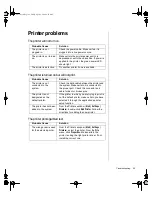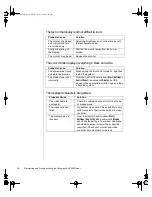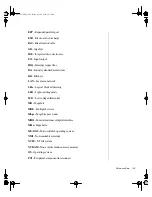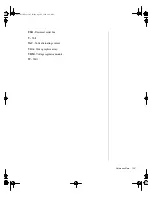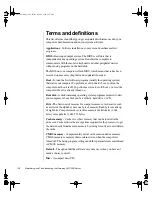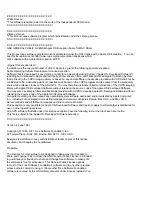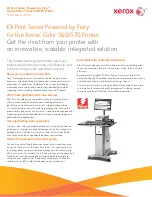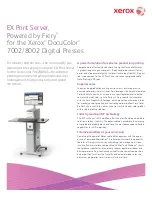
106 Maintaining and Troubleshooting the Gateway ALR 7300 Server
Terms and definitions
This list of terms should help you get acquainted with terms used in your
computer’s documentation and in your system software.
Applications
- Software installed on your system. Sometimes called
programs
.
BIOS -
Basic input/output system. The BIOS is software that is
independent of any operating system. It enables the computer to
communicate with the monitor, keyboard, and other peripheral devices
without using programs on the hard disk.
The BIOS on your computer is flash BIOS, which means that is has been
recorded on a memory chip that can be updated if needed.
Boot -
To load the first software program (usually the operating system)
that starts your computer. To perform a cold (or hard) boot, you turn the
computer on when it is off. To perform a warm (or soft) boot, you reset the
computer when it is already turned on.
Boot disk -
A disk containing operating system programs required to start
your computer. A boot disk can be a diskette, hard drive, or CD.
Byte -
The basic unit of measure for computer memory. A character, such
as a letter of the alphabet, uses one byte of memory. Each byte is made up
of eight bits. Computer memory is often measured in kilobytes (1,024
bytes) or megabytes (1,048,576 bytes).
Cache memory -
Cache is very fast memory that can be located in the
processor. Cache reduces the average time required for the processor to get
the data it needs from the main memory by storing recently accessed data in
the cache.
CMOS memory -
Complementary metal oxide semiconductor memory.
CMOS memory is memory that is retained even when the computer is
turned off. The Setup program settings and other parameters are maintained
in CMOS memory.
Default
- The option that the software or system uses when you have not
made a choice yourself.
Disc -
A compact disc (CD).
4075.book Page 106 Friday, April 2, 1999 9:26 AM


